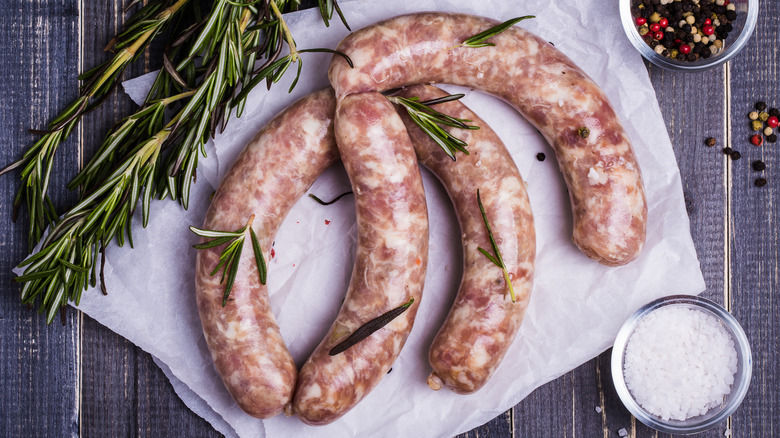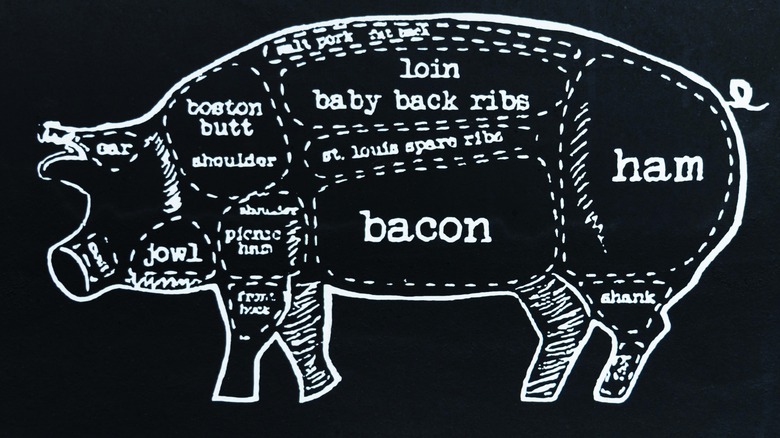What Cuts Of Pork Are Normally Used In Sausages?
If you're a lover of pork products, chances are you've thought more than once about making your own sausages. This needn't be the daunting task it seems. There are several ways to make sausage that don't require casings or large grinding machines to achieve a perfectly tasty product. But why bother making sausages when you can buy pre-made links and patties at the store?
First off, it's cheaper. Then there's the fact that by making your own sausages you are 100% in charge of what goes into it. Outsourcing your sausages to large, pork processing facilities, while convenient, is not the best way to understand what goes into the product you're consuming. The closest thing you'll get to a homemade sausage without actually making them yourself is to befriend a local butcher. As these professionals are few and far between these days, it'd behoove you to learn to make your own at home.
To do this, you need to know what cuts of pork are usually used. Sausages need a decent ratio of meat to fat. Leaner cuts like tenderloin don't have enough fat, while cuts like fatback or jowl are too fatty. You're looking for a cut that will give you enough protein for substance, but enough fat to act as a binder and add flavor and juiciness.
The right meat/fat ratio
The question of which cut of pork is best for making sausage boils down to the meat/fat ratio. The ratio you are looking for is about 80% meat to 20% fat — and it's the shoulder of the pork that hits that sweet spot.
While the shoulder is generally considered a tough, meaty cut, owing to the amount of exercise it receives, it contains a good amount of fat that makes the cut ideal for sausage. Mincing this meat immediately takes care of its toughness by breaking apart and tenderizing the connective tissue and marbling the hash with fat. The fat acts as a lubricant, making the meat mixture easier to handle for seasoning, forming into patties, or stuffing into casings while also making the meat easier to chew.
There is no one rule that says the shoulder is the be-all-end-all cut for sausage. Indeed, people have been making sausages from of all sorts of off-cuts for centuries. Over time, though, the shoulder has been determined to be one of the best cuts available for making consistently flavorful and tender sausages. So, if you've got a butcher who can grind some for you or a meat grinder of your own, try your hand at your own pork shoulder sausages and see the results for yourself.

